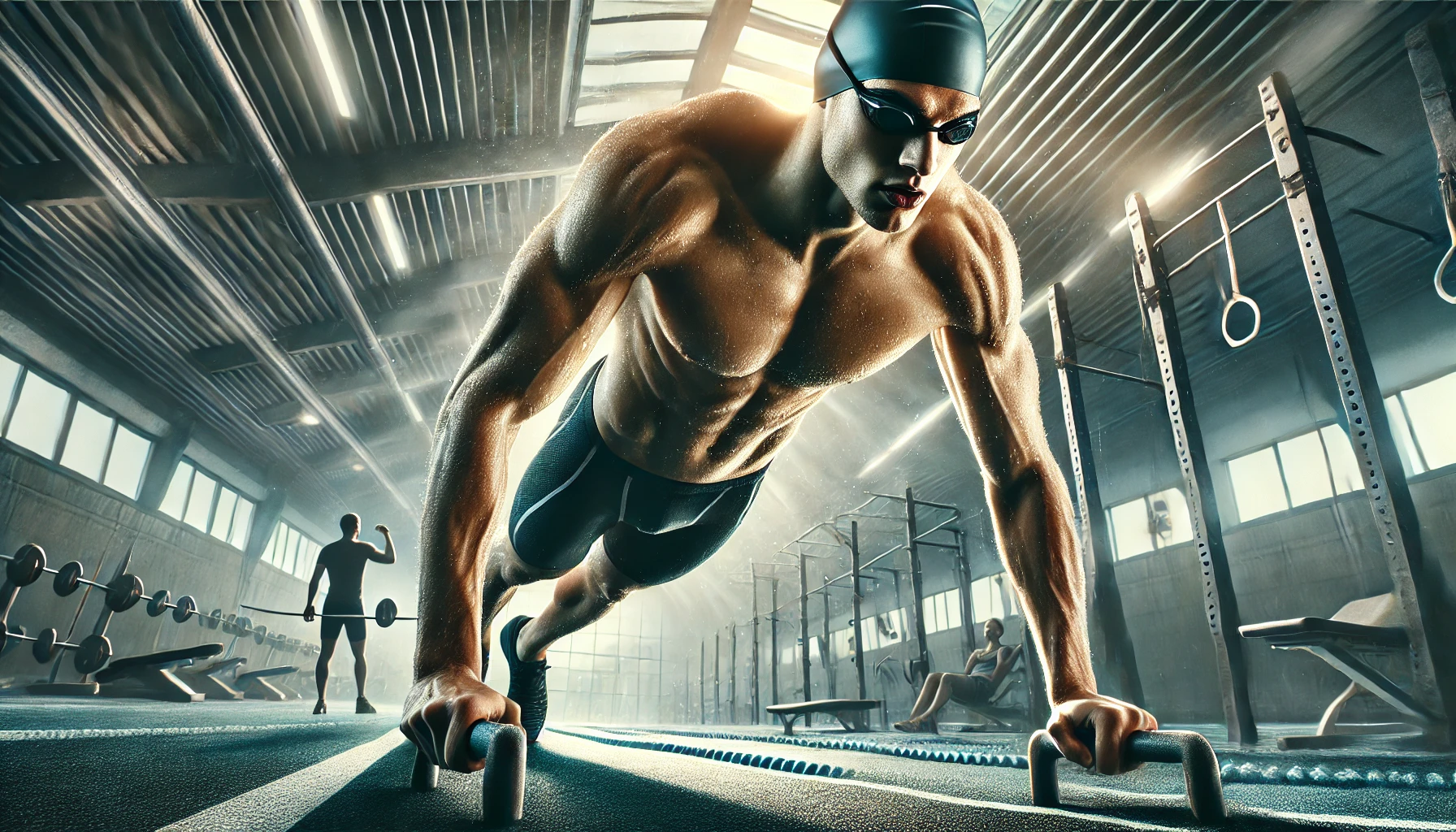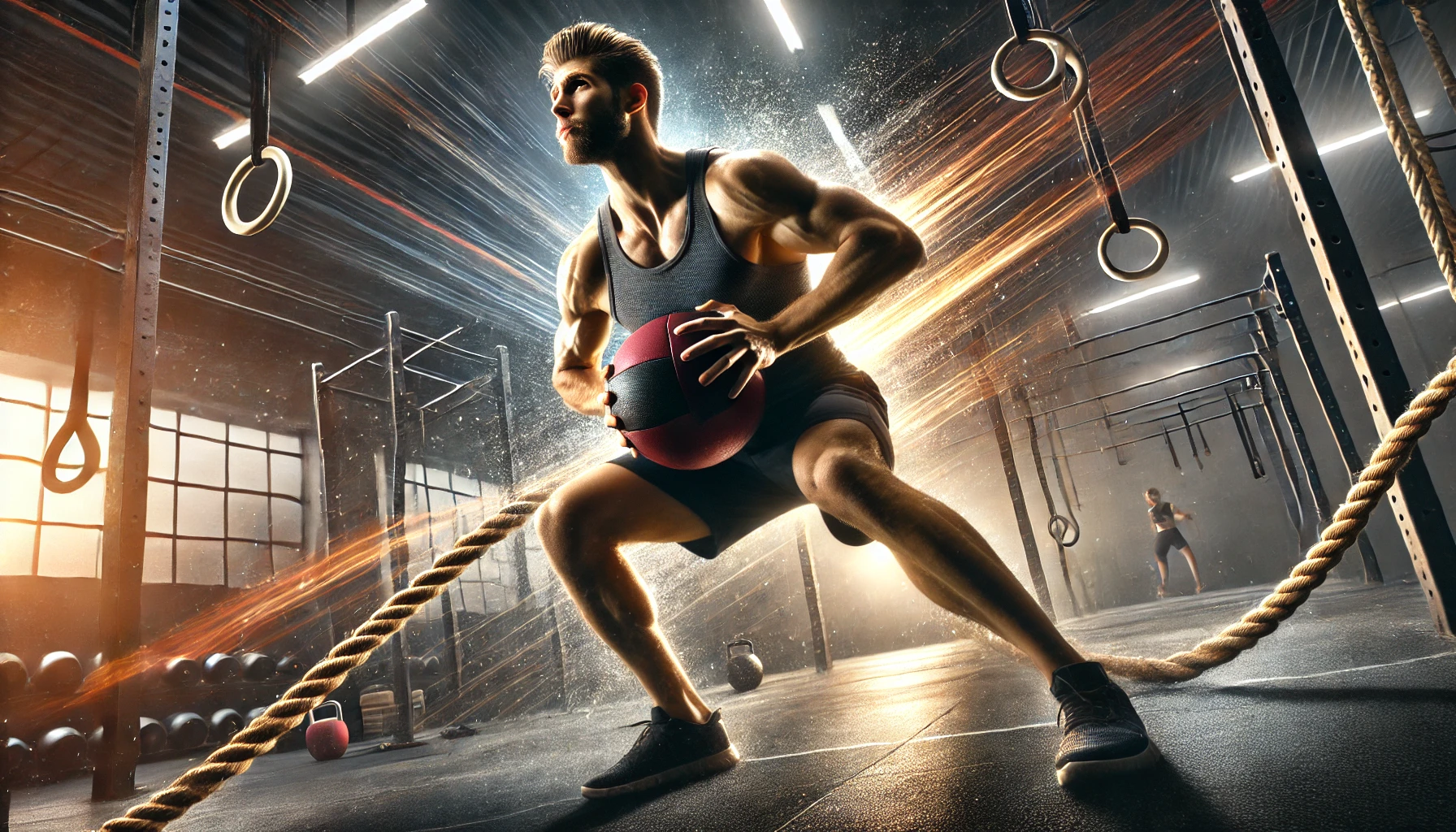Strengthening the Foundations: Why Dryland Exercises Matter for Swimmers
Swimmers are often seen as water athletes, but a great deal of the strength, power, and endurance they bring to the pool comes from their work on land. Dryland exercises—those done outside of the water—are an integral part of every swimmer’s training routine. These exercises target specific muscle groups, enhance flexibility, build core stability, and prevent injury, all of which are crucial for improving swimming performance.
Dryland workouts aren’t just about bulking up or increasing endurance. They are designed to complement the swimming strokes swimmers use in the pool, strengthening muscles that are heavily involved in those movements. For example, the core stability you develop on land directly translates into improved body position in the water, resulting in better efficiency and speed. Dryland exercises also work on mobility, flexibility, and balance, all of which enhance stroke technique and swimming mechanics. It’s no wonder that elite swimmers integrate these workouts into their training routines to maximize their performance and avoid plateauing.
Building Strength: Targeting Key Muscles for Powerful Strokes
Swimmers rely on power and strength to propel themselves through the water with speed and efficiency. To achieve this, dryland exercises should focus on building strength in the muscles that contribute the most to swimming movements. These muscles include the shoulders, back, core, legs, and arms.
One of the most effective exercises to enhance upper body strength for swimming is the pull-up. Pull-ups target the latissimus dorsi (lats), trapezius, and biceps—all key muscles for swimming strokes like freestyle, backstroke, and butterfly. If you’re unable to perform a pull-up initially, using resistance bands or assisted pull-up machines can help you build the strength needed to master this important exercise.
Push-ups are another great way to target the upper body, particularly the chest, shoulders, and triceps. These muscles are crucial for the push phase of your stroke. To make the push-up even more challenging, try variations such as diamond push-ups or decline push-ups to target different areas of the chest and shoulders.
Core strength is vital for swimmers, as a stable and powerful core helps maintain proper body position and streamline in the water. Exercises like planks, Russian twists, and leg raises are excellent choices for building a strong core. Planks are especially beneficial because they engage multiple muscle groups simultaneously, providing a full-body workout that enhances endurance and stability in the water. By training your core, you’ll improve your ability to hold a streamlined position during long swims, which will reduce drag and increase your speed.
Enhancing Flexibility: The Key to Fluid Movement
Flexibility is a critical component of a swimmer’s performance. The more flexible you are, the more fluid and efficient your strokes will be. Tight muscles can restrict your range of motion, leading to inefficient swimming mechanics and slower times. Stretching and mobility exercises are essential for swimmers who want to stay injury-free and improve their swimming technique.
A dynamic warm-up before your dryland workout can significantly enhance your flexibility and mobility. Dynamic stretches—like leg swings, arm circles, and hip rotations—prepare your muscles for the intense movements required in swimming. These exercises increase blood flow to your muscles, making them more pliable and ready for action.
To specifically target areas that often become tight from swimming, focus on stretches for the shoulders, hips, and legs. Shoulder stretches, such as the doorway stretch or arm crossovers, help improve your shoulder rotation and flexibility, which are crucial for stroke efficiency. For swimmers, hip flexibility is equally important, as it aids in kicking and body positioning. Performing hip flexor stretches, butterfly stretches, and lunges can improve flexibility in this area, contributing to a more fluid and powerful kick.
Additionally, yoga can be a wonderful practice for swimmers looking to increase their flexibility. Many yoga poses, such as downward dog, pigeon pose, and cobra, target key areas like the shoulders, back, and hips, helping swimmers improve both flexibility and strength in a holistic way.
Speed and Agility: Training Your Body for Quick Movements
In swimming, speed isn’t just about how hard you push through the water—it’s about how quickly and efficiently you move through each stroke. To improve your swimming speed, you need to train your muscles to react quickly and efficiently. This requires a combination of explosive movements and agility training, both of which can be enhanced through dryland exercises.
Plyometric exercises, such as squat jumps, box jumps, and bounding, are excellent for building explosive power. These exercises train your muscles to react quickly and forcefully, mimicking the burst of energy required during a sprint swim. By incorporating plyometrics into your routine, you’ll develop the power needed to generate quick, explosive movements in the water.
Agility drills, such as ladder drills and cone drills, can help improve your coordination, quickness, and footwork. While these drills are often associated with sports like soccer and basketball, they’re equally beneficial for swimmers. Agility is about more than just speed—it’s about the ability to change direction quickly and with control. This translates directly into better stroke technique, as swimmers need to adjust their position and movements efficiently during each stroke cycle.
Preventing Injury: Building Stability and Balance
Injury prevention is one of the most important reasons swimmers incorporate dryland exercises into their training. Swimming can place a lot of stress on certain muscle groups, especially the shoulders and knees, making it essential to build stability and balance to avoid overuse injuries.
One of the best exercises for improving stability and reducing injury risk is the single-leg deadlift. This exercise targets the hamstrings, glutes, and core while improving balance and proprioception. When you perform this movement on one leg, you train your body to stabilize itself in dynamic situations, which is exactly what happens when you swim.
Balance exercises, such as standing on one leg or using a balance board, can also enhance stability and reduce the likelihood of injuries. By engaging your stabilizing muscles, you improve your ability to control your movements in the water, which helps prevent overcompensation and strain on joints.
Strengthening the rotator cuff is also crucial for swimmers, as this muscle group stabilizes the shoulder joint. Rotator cuff exercises, such as internal and external rotations with a resistance band or dumbbells, help protect against common swimming injuries like tendonitis or shoulder impingement. Incorporating these exercises into your routine will improve your shoulder stability and allow you to swim longer and with less risk of injury.
Full-Body Workouts: The Importance of Functional Movements
While swimmers need to focus on specific muscles, they also require full-body workouts to maintain overall strength and coordination. Functional movements, such as squats, lunges, and deadlifts, are crucial for swimmers as they target multiple muscle groups and improve overall body strength.
The squat is one of the best functional exercises for swimmers, as it strengthens the legs, core, and lower back—all of which are involved in kicking and maintaining body position in the water. The lunge is another fantastic exercise for swimmers, as it helps develop leg strength and balance, both of which are necessary for powerful kicks and efficient strokes.
Deadlifts, which target the posterior chain (hamstrings, glutes, and lower back), are essential for swimmers who need strong legs and lower back muscles to maintain a streamlined position and generate power during each stroke. These compound exercises are essential for building overall strength and ensuring that swimmers are ready to perform in the pool.
Designing Your Dryland Workout: A Sample Routine
To make the most of your dryland exercises, it’s important to design a workout routine that targets all the key areas of swimming performance. A well-rounded workout should include exercises that focus on strength, flexibility, speed, and injury prevention. Here’s a sample routine to get you started:
- Warm-up: Start with dynamic stretches (arm circles, leg swings, hip rotations) to increase blood flow and prepare your muscles for exercise.
- Strength training: Include exercises like pull-ups, push-ups, planks, squats, and lunges to target key swimming muscles.
- Explosive power: Incorporate plyometric exercises such as squat jumps, box jumps, and bounding to develop quickness and explosiveness.
- Flexibility: Finish with static stretches targeting the shoulders, hips, and legs, focusing on areas that are most engaged during swimming.
Fueling Performance: Nutrition for Dryland Training and Swimming
Dryland exercises are intense, and to perform at your best, your body needs proper fuel and recovery. Eating a balanced diet with the right macronutrients—carbohydrates for energy, protein for muscle recovery, and fats for sustained fuel—is essential for optimal performance.
Before a dryland workout, make sure to eat a light, energy-boosting snack that includes carbohydrates and protein. After your workout, refuel with a post-exercise meal that contains protein to repair muscle fibers and carbohydrates to replenish glycogen stores. Hydration is just as important, so make sure to drink plenty of water throughout the day.
Beyond the Basics: The Champion’s Mindset
While physical training is important, the mental aspect of dryland workouts cannot be ignored. Swimmers must approach their dryland exercises with the same focus, determination, and discipline they bring to the pool. Cultivating a champion’s mindset means pushing through tough workouts, staying consistent, and always striving to improve.
Remember, dryland exercises aren’t just about building muscle—they’re about building resilience, focus, and determination that will carry you through every lap in the pool. The work you put in on land will directly translate into faster, more powerful strokes in the water, and ultimately, better performance overall.
Keep Moving Forward: Never Stop Improving
Dryland exercises are essential to maximizing your swimming potential. By targeting key muscle groups, enhancing flexibility, building power, and preventing injury, these exercises give swimmers the tools they need to succeed. Stay dedicated to your dryland workouts, continue to challenge yourself, and watch as your swimming performance improves. As with everything in swimming, consistency and hard work will always pay off, both in the pool and beyond. So, dive in, put in the work, and continue to strengthen the foundations of your swimming success!




